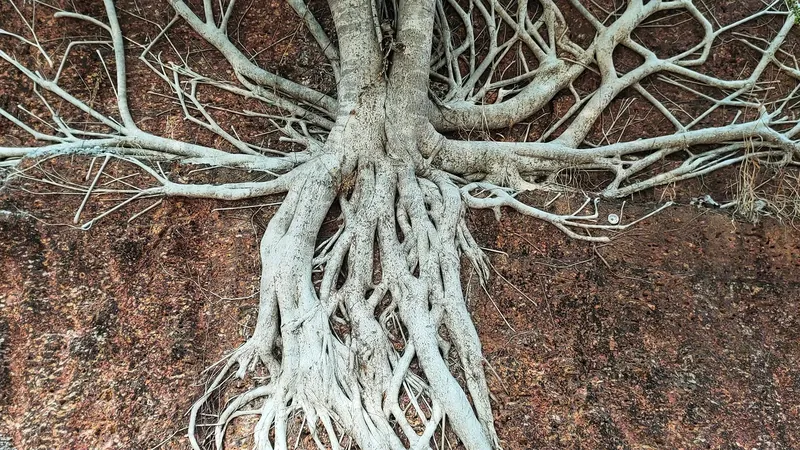
Unlocking Nature's Climate Secrets: How Plants' Hidden Roots Can Save Our Planet
2025-06-21
Author: Liam
Are Plants Hiding a Climate Solution Underground?
A groundbreaking study published in *Nature Communications* is rewriting our understanding of plant ecosystems and their role in combating climate change. This research uncovers a mysterious aspect of plant behavior: their secret second roots that lie deep beneath the surface, potentially storing carbon more effectively than we thought.
At a time when CO2 levels have skyrocketed to heights not seen in 800,000 years, the implications of this research are profound. Mingzhen Lu, an assistant professor from New York University and the study’s lead author, emphasizes the importance of knowing where plants establish their roots, stating, "Deeper roots could mean safer and longer-term carbon storage. Harsher conditions at depth may hinder microbes from releasing carbon back into the atmosphere."
Diving Deeper: The Research That Discovered Hidden Roots
Utilizing data from the National Ecological Observatory Network (NEON), the team investigated rooting patterns down to depths of 6.5 feet—far beyond the one-foot limit of traditional studies. This exploration spanned diverse ecosystems from the Alaskan tundra to the lush rainforests of Puerto Rico, revealing surprising rooting strategies.
The research tackled three critical questions to shed light on how plants adapt to their environments: 1. **How does root abundance change with depth?** 2. **What factors impact root distribution?** 3. **Are deeper soil nutrients utilized effectively by these roots?**
The Bimodal Phenomenon: A New Layer of Understanding
In an astonishing discovery, nearly 20% of the ecosystems examined exhibited a phenomenon known as "bimodality"—where roots peak in abundance twice at different depths. This indicates that many plants have developed a second set of roots over three feet deep, strategically aligning with nutrient-rich soil layers.
As Lu notes, "Above ground, we have eagle vision thanks to satellites, yet below ground, we operate with mole vision." This highlights a significant knowledge gap: without a thorough investigation of deeper roots, we may be underestimating plants' capacity to act as carbon reservoirs.
Implications for Climate Science and Policy
Coauthor Avni Malhotra adds an intriguing dimension to this discovery, stating that the implications of these deep-root systems could both enhance soil carbon storage or trigger losses, depending on microbial activity in the soil. This opens up new avenues for exploration into how these bimodal rooting patterns could influence nutrient cycling, water management, and long-term carbon storage.
Lu’s remarks shine a light on the urgency of this research: "Scientists and policymakers must dig deeper beneath the Earth's surface. These overlooked soil layers could be critical in managing ecosystems as our climate continues to shift. The silver lining? Plants might be playing a more pivotal role in climate mitigation than we ever realized—if we just look a little deeper!"
A Collaborative Effort
This innovative study was a collaborative effort among researchers from Boston College, Columbia University, Dartmouth College, the Morton Arboretum, and Stanford University, among others, indicating a wide-ranging academic commitment to exploring this vital aspect of our environment.









 Brasil (PT)
Brasil (PT)
 Canada (EN)
Canada (EN)
 Chile (ES)
Chile (ES)
 Česko (CS)
Česko (CS)
 대한민국 (KO)
대한민국 (KO)
 España (ES)
España (ES)
 France (FR)
France (FR)
 Hong Kong (EN)
Hong Kong (EN)
 Italia (IT)
Italia (IT)
 日本 (JA)
日本 (JA)
 Magyarország (HU)
Magyarország (HU)
 Norge (NO)
Norge (NO)
 Polska (PL)
Polska (PL)
 Schweiz (DE)
Schweiz (DE)
 Singapore (EN)
Singapore (EN)
 Sverige (SV)
Sverige (SV)
 Suomi (FI)
Suomi (FI)
 Türkiye (TR)
Türkiye (TR)
 الإمارات العربية المتحدة (AR)
الإمارات العربية المتحدة (AR)